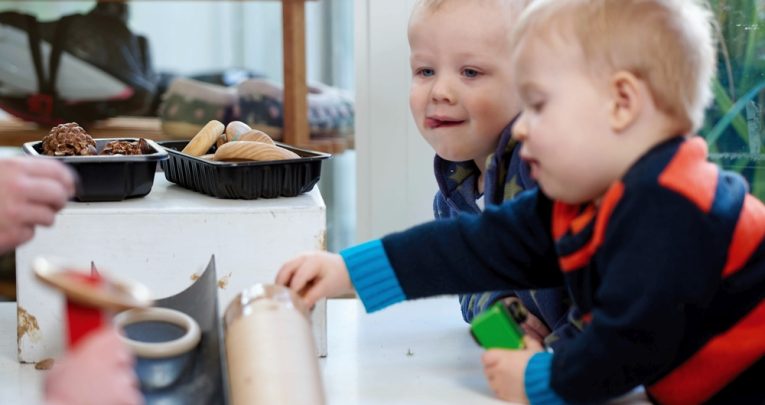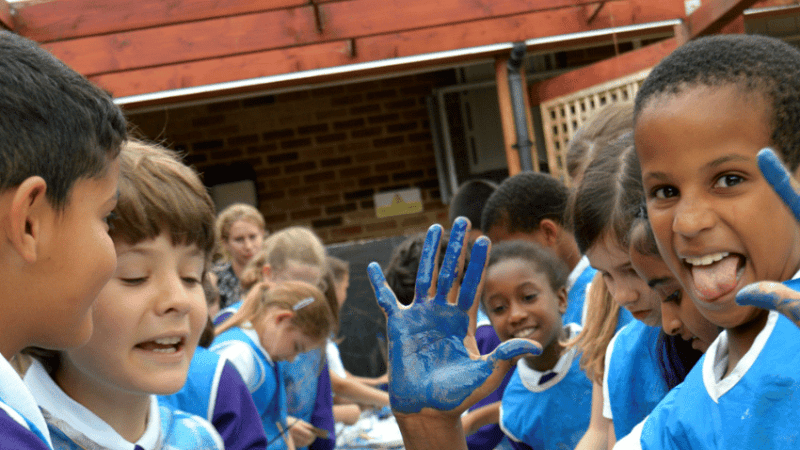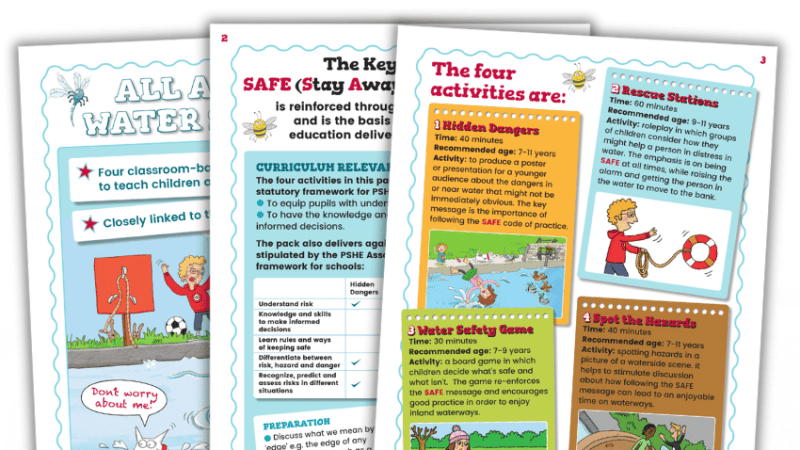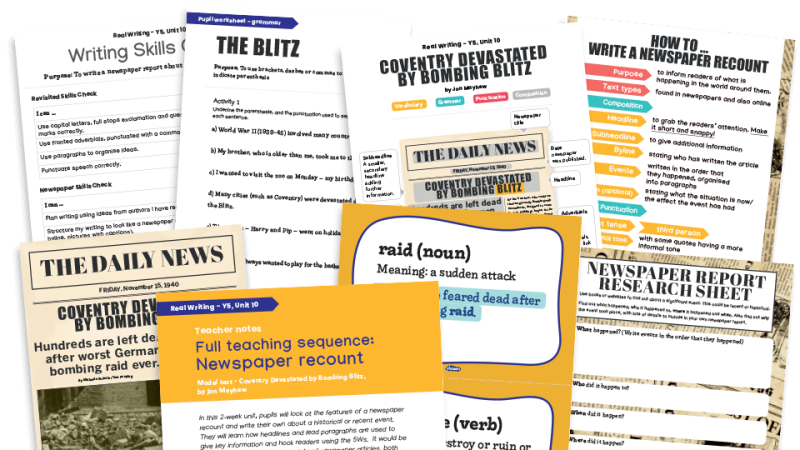How Loose Parts Play Can Make Your Setting More Creative

Be they man-made or naturally occurring, found in the woods or collected from the local DIY store, these open-ended resources will transform your outdoor provision, says Kirstine Beeley…

We’ve all seen how children of all ages react to an empty box at Christmas (or any other time of the year, come to think of it!). The enthusiasm generated by such a simple resource should give you a pretty clear idea about the thinking behind using open-ended resources and loose parts play.
Giving children open-ended resources allows them to explore freely, to be creative and imaginative according to their own thinking. For practitioners more used to pre-planning what can be a limited repertoire of activities, it requires some adaptability – an ability to learn to be reactive to children’s interests.
It requires adults to follow the children’s lead and enhance and extend the learning they observe through careful and sensitive intervention. But it’s well worth the effort involved…
Take it outside
Stocking your outdoor area with loose parts offers the potential for lots of learning, some of which I will highlight here, but which can go as far as a child’s interest determines. The key is to encourage children to explore and then for practitioners to spot opportunities to discuss concepts as their explorations unfold. Best practice asks that these open-ended resources are made readily available all of the time, so that children can choose what they want to explore on any one day, and to give them the chance to revisit again and again anything that takes their particular interest.
Using drainpipes and tubing with water and crates, for example, will provide a fantastic opportunity to give children sustained active learning, to explore their own ideas, to try things out and to solve problems as they arise. It therefore allows children to display most Characteristics of Effective Learning as part of one exploration.
Better for the budget
With budgets limited, and in some cases non-existent, many early years settings are continually on the look out for affordable solutions to providing high-quality learning.
Using loose parts as part of your provision provides plenty of possibilities without huge expense, and while still embracing the principles of child-led learning. Thus when it comes to outdoor play, the benefits of using loose parts for play are both financial and educationally wide-reaching. The majority of interesting loose parts resources can be sourced locally for little to no cost, and once acquired they just need topping up regularly to ensure continued use and interest. Options for the outdoor environment include a huge variety of both man-made and natural materials, which when made readily available offer a host of possibilities for play.
The main characteristic of loose parts is that there is no right or wrong way to use them, allowing children to adapt their use in whichever direction they choose. One person’s rubbish is definitely another’s treasure! Local businesses will donate lots of materials if you ask nicely. Drainpipes and guttering can be obtained from local builders and roofers. Tyres are usually free from local garages, with smaller versions available from go-karting tracks. Builders/landscape gardeners are a great source of decking plank off-cuts, and wooden cable reels can be sourced from local electrical supplies companies.
These types of businesses usually have to pay to dispose of such items, and will often be happy for you to just have them. B&Q, for example, runs a community re-use scheme – register your setting and they will donate offcuts, paint, tools and other items. Local tree surgeons are often willing to donate logs and log slices for free or a small charge. Log cookies – small biscuit-sized log slices – are easily made at home with a good saw. Pebbles can be sourced from garden suppliers or DIY stores, though bear in mind that river-washed cobbles are the best.
It is illegal to remove pebbles from UK beaches – there would, after all, be an environmental knock-on effect if our beaches were to start disappearing and popping up in preschool gardens! However, many DIY stores and garden centres will donate broken bags of cobbles, if you ask nicely. Make sure that when sourcing sticks, bark, leaves, pine cones and so forth from local woodlands, that you do so responsibly. Many woodland trust and forestry commission sites will also donate logs if you contact them and explain your project.
Loose parts learning
You’ll find lots of ideas for using man-made materials in the panel on this page. Natural materials, such as those listed in the box below, are equally versatile. Children can compare their size, shape and colour. They can count, sort and match them. Jumping and stepping across log slices offers opportunities for counting, too – not just in ones but twos, 10s, etc. as well as the chance to explore counting backwards. Chalking numerals onto the slices gives lots of opportunity for numeral recognition as well as the exploration of missing numbers. Adding old balance kitchen scales to your provision gives children the chance to explore weighing loose parts, seeing what happens with more or less and to actively explore the concepts of heavy and light, etc. Finally for this article, as well as stocking your outdoor area with lots of open-ended resources, make sure the environment is not ‘over planned’. Check that there is plenty of space for children to explore and use the equipment they have access to, and be prepared to follow them on their personal learning journey with the pieces they use. Remember, a climbing frame can only be a climbing frame, but a couple of crates and some planks can be a car, a boat, an obstacle course or a bridge! Open your mind to open-ended resources and unlock the potential for effective outdoor learning.
Natural loose parts
• Seashells • Pine Cones (lots of shapes and sizes) • Bark Pieces • Pebbles • Sticks • Seasonal flowers and seeds • Moss • Wood slices and wood cookies (variety of sizes)
Man-made loose parts
Planks of wood pieces of wood, decking boards, etc. can be used to bridge crates or make ramps and walkways for cars and little feet.
Old milk crates Brilliant for building towers, dens and obstacle courses, or for using as seats and tables in imaginary cafes and mud kitchens.
Old tyres (car and go-kart) As well as lots of size and weight exploration, tyres are great for rolling cooperatively, building obstacle courses and sitting on or in, as well as filling with sand, pebbles, etc. To avoid stagnant water collecting in them, simply drill a few holes through the tyre walls.
Cable reels (big and small, wooden and plastic) Excellent for building, rolling and sitting on. Cover in blackboard paint and they become even more open-ended, as children can draw on wheels, controls, signs, etc.
Bricks (real and rubber) Lots of potential for building towers, spaces and obstacle courses.
Guttering and drainpipe A timeless resource for exploring the movement of water, cars, balls, pine cones, etc. They are easily connected together, and with stands or crates can offer lots of shared problem solving.
Kirstine Beeley is an author and educational consultant; for more information, visit www.playingtolearnuk.com












